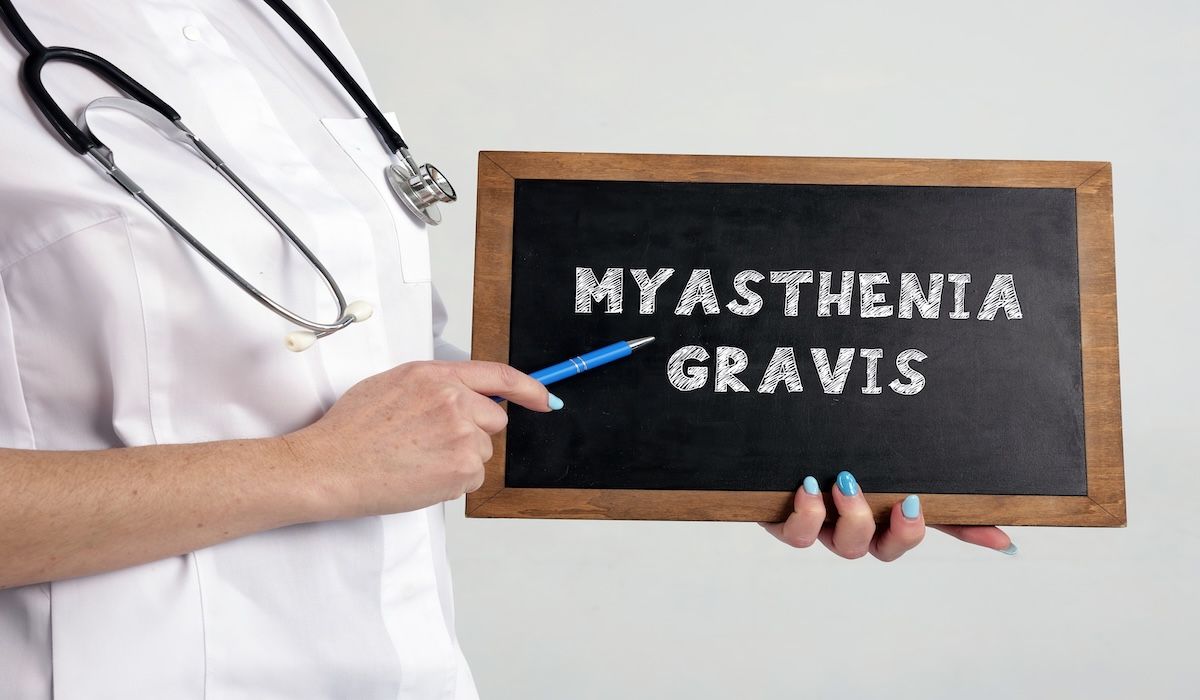Rozanolixizumab improved muscle weakness and fatigue for patients who had myasthenia gravis and for whom patient-reported outcomes were investigated in the phase 3 MycarinG study (NCT03971422), with results from MG Symptoms Patient-Reported Outcome (MG Symptoms PRO) scales complementing the Myasthenia Gravis Activities of Daily Living (MG-ADL) index for providing a comprehensive overview of the humanized IgG4 monoclonal antibody’s impact on participants.1
Patient-reported outcomes evaluated by the MG Symptoms PRO scales are muscle weakness fatigability, physical fatigue, bulbar muscle weakness, ocular muscle weakness, and respiratory muscle weakness.
These results were published recently in European Journal of Neurology, and they echo previous research on the promise of MG Symptoms PRO to effectively and accurately measure myasthenia gravis symptom and disease severity.2
“These post hoc analyses of data collected in the MycarinG study provide further evidence for the added value of the MG Symptoms PRO for evaluating gMG symptoms that are meaningful to patients,” the study authors wrote, “including changes following treatment.”
In the MycarinG study, patients were randomized 1:1:1 to rozanolixizumab 7 mg/kg (n = 66), rozanolixizumab 10 mg/kg (n = 67), or placebo (n = 67). Ninety percent of these patients had anti–acetylcholine receptor antibody–positive (AChR Ab+) generalized myasthenia gravis (gMG), and 11% of patients had anti–muscle-specific tyrosine kinase antibody positive (MuSK Ab+) gMG. The investigators compared results from each MG Symptoms PRO subscale with similar subdomain scores on the MG-ADL index and the Quantitative MG scale (QMG).
At baseline, mean (SD) MG-ADL and QMG scores were 8.3 (3.4) and 15.6 (3.6), respectively.
There were strong correlations between MG Symptom PRO’s ocular muscle weakness scale and bulbar muscle weakness and related MG-ADL scores at baseline, the study authors said. These correlation coefficients were 0.78 and 0.72, respectively. Moderate correlations were seen between MG Symptom PRO muscle weakness fatigability and MG-ADL limb/gross motor function (0.50) and MG-ADL bulbar weakness (0.52), MG Symptom PRO physical fatigue and MG-ADL limb/gross motor function (0.60), and MG Symptom PRO respiratory muscle weakness and MG-ADL respiratory fatigue (0.58).
Rozanolixizumab was first approved for myasthenia gravis in the US in 2023, with approvals in Japan and the European Union following later that year and 2025, respectively.| Image Credit: © Yurii Kibalnik-stock.adobe.com
Results were weaker between MG Symptom PRO and QMG, respectively. The strongest correlations were seen between the following:
- Respiratory muscle weakness and QMG bulbar function: 0.23
- Muscle weakness fatigability and QMG bulbar weakness: 0.35
- Physical fatigue and QMG gross motor function: 0.38
- Ocular muscle weakness and QMG ocular function: 0.45
- Bulbar muscle weakness and QMG bulbar function: 0.50
Three of the MG Symptom PRO scales were considered secondary end points, and for these, patients were evaluated for their response by day 43 of treatment. More patients who received rozanolixizumab compared with placebo, as well as more patients in the higher- vs the lower-dose group, demonstrated improvements on:
- Muscle weakness fatigability: 46.9% (7-mg/kg dose) vs 56.5% (10-mg/kg dose) vs 28.1%
- Physical fatigue: 31.3% vs 48.4% vs 26.5%, respectively
- Bulbar muscle weakness: 26.6% vs 32.3% vs 10.9%
These patients were also determined to be responders according to the MG-ADL index and QMG, with 69% to 73% of patients treated with rozanolixizumab showing improvement.
Drilling down to what the study authors called item-level analysis—for such things as worsening vision, breathing difficulty, eyelid drooping, heavy legs, lack of energy, no muscle strength, difficulty swallowing, and slurred speech—patients in both rozanolixizumab-treated cohorts also achieved superior outcomes vs placebo for muscle weakness fatigability, physical fatigue, and bulbar muscle weakness.
Finally, using the Rasch model, which evaluates difficulty of a task and individual ability,3 the authors determined that following treatment with rozanolixizumab, patients would report symptoms none of the time or a little of the time for muscle weakness fatigability and physical fatigue, and for bulbar muscle weakness, no symptoms.
About the strength of the MG Symptoms PRO, the authors wrote that its subscales “provide more granularity than existing tools,” and they noted their data show results similar to previous analyses of moderate to strong correlations between MG Symptoms PRO and MG-ADL and QMG. However, there were also limitations to their investigation, including patients with very mild disease or very severe weakness and no responder thresholds for the respiratory muscle weakness and ocular muscle weakness scales.
“To our knowledge, this type of analysis has not previously been utilized in gMG, with only one example in the literature of a similar graphical representation,” they concluded.
References
- Kaminski HJ, Antozzi C, Habib AA, et al. Improvement in patient-reported symptoms of generalised myasthenia gravis with rozanolixizumab in the randomised phase 3 MycarinG Study using the MG Symptoms PRO. Eur J Neurol. 2025;32(8):e70231. doi:10.1111/ene.70231
- Shaw M. MG Symptoms PRO potential new tool to evaluate mg symptom, disease severity. AJMC®. October 31, 2023. Accessed August 21, 2025. https://www.ajmc.com/view/mg-symptoms-pro-potential-new-tool-to-evaluate-mg-symptom-disease-severity
- Rasch modeling. Columbia Mailman School of Public Health. Accessed August 21, 2025. https://www.publichealth.columbia.edu/research/population-health-methods/rasch-modeling
